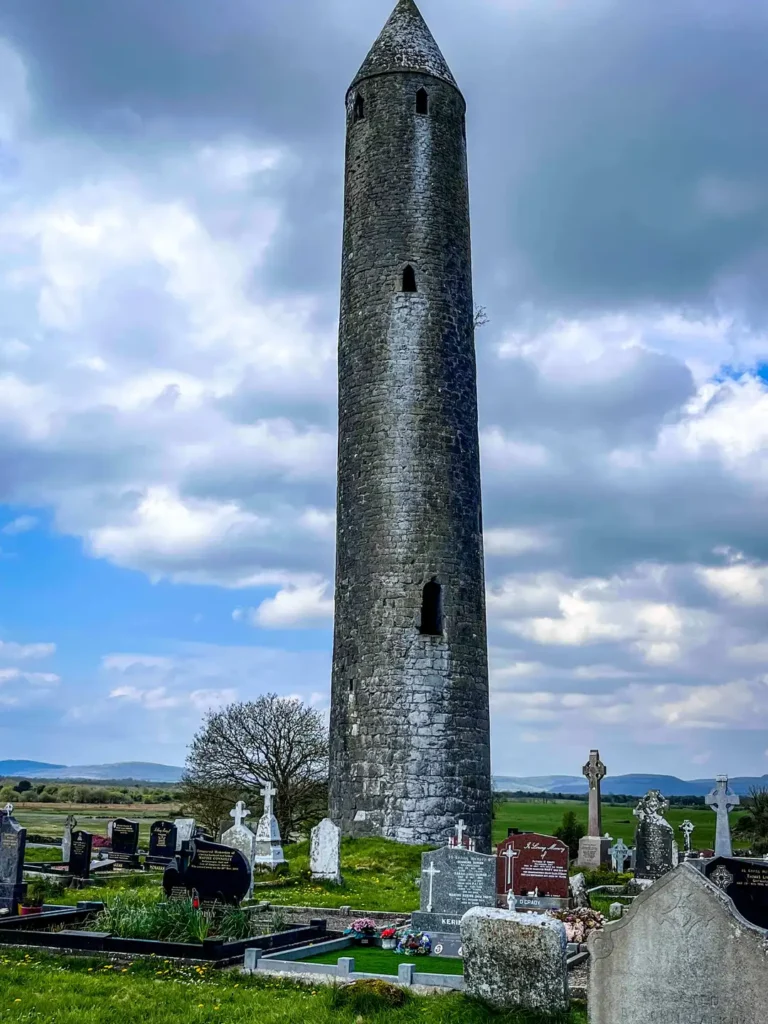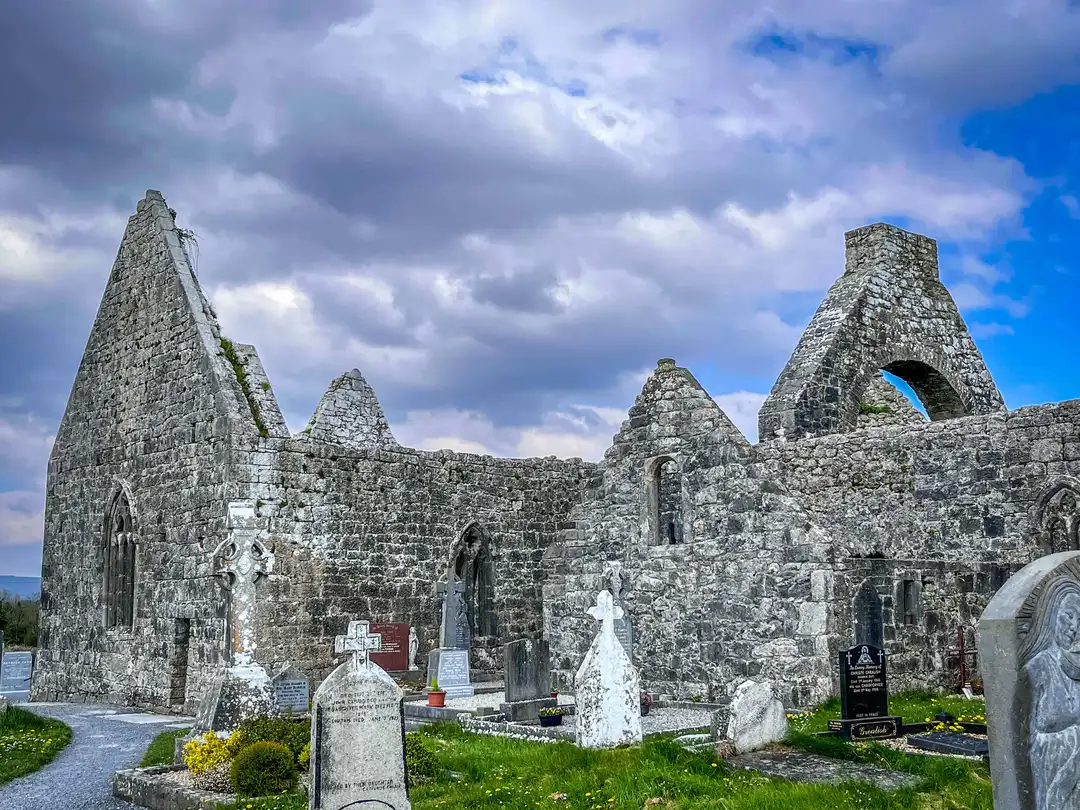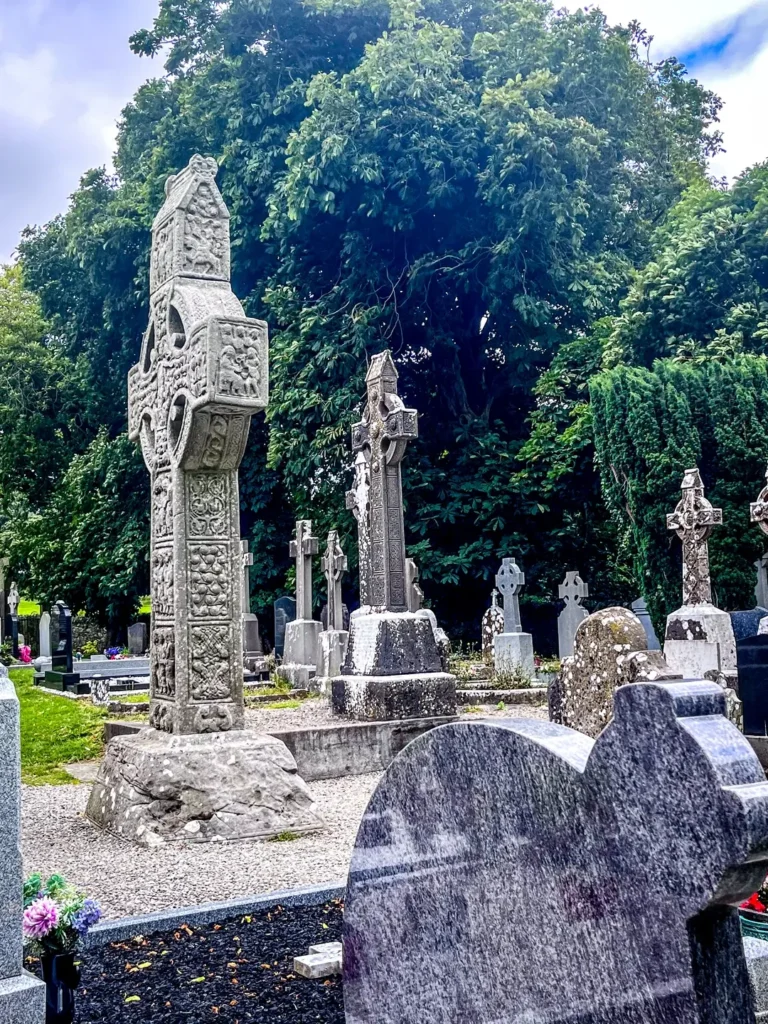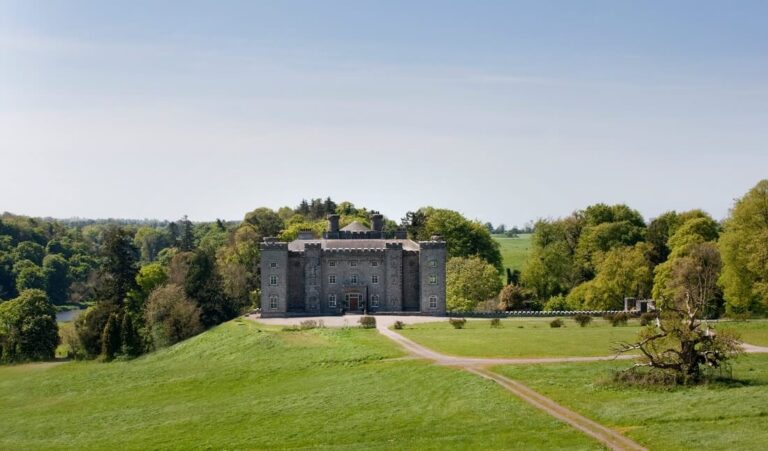Early Christian Foundations
So, you’re curious about how early Christianity got started? It’s a pretty interesting story, way more than just a simple timeline. We’re talking about how a small group of followers grew into a massive movement, facing all sorts of challenges along the way. This article will look at the beginnings of the Christian faith, how it spread, and some of the cool places where it all happened, including some important early Christian sites in Ireland.
Key Takeaways
- The Christian faith began with its roots in Jewish traditions and teachings, evolving from the Apostolic Age.
- Early Christian communities showed a lot of variety in their beliefs and practices, with local churches having their own ideas, though Paul’s letters tried to bring some order.
- Community was a big deal for early Christians; they shared resources, worshipped together, and supported each other through thick and thin.
- Christianity spread pretty quickly from its starting point, with missionaries traveling far and wide, and you can still see evidence of this growth in places like early Christian sites in Ireland.
- Life wasn’t easy for early Christians; they often had to practice their faith in secret and faced various trials and tough times.
The Origins of Early Christianity
Apostolic Age Foundations
The period known as the Apostolic Age is super important. It’s basically the time when the original apostles of Jesus were still around, spreading the message and setting up the first churches. This era, roughly from 30 AD to 100 AD, laid the groundwork for pretty much everything that came after.
Think of it like this:
- The apostles were eyewitnesses to Jesus’ life, death, and resurrection. Their accounts and teachings were considered authoritative.
- They established communities of believers in various cities across the Roman Empire.
- They faced challenges like persecution and internal disagreements, but they kept going.
The apostles’ direct leadership and teachings were instrumental in shaping the core beliefs and practices of the early Christian movement. Their influence extended far beyond their lifetimes, as their successors continued to build upon the foundations they had laid.
Jewish Roots of the Faith
Christianity didn’t just pop out of nowhere. It grew out of Judaism. Jesus was Jewish, his first followers were Jewish, and the early church was initially a Jewish movement. Understanding this connection is key to understanding early Christianity. The Jewish diaspora played a significant role in the spread of early Christian ideas.
Here’s what that means:
- Early Christians used the Jewish scriptures (what Christians call the Old Testament) as their holy book.
- They worshipped in synagogues and followed Jewish customs.
- They saw Jesus as the fulfillment of Jewish prophecies.
Early Christian Sites Ireland
While the earliest days of Christianity were centered around the Middle East and the Roman Empire, the faith eventually spread to other parts of the world, including Ireland. The story of early Christian sites in Ireland is fascinating. It shows how Christianity adapted to new cultures and environments. It’s a bit later than the Apostolic Age, but still important for understanding the broader picture.
Some key things to know:
- Christianity arrived in Ireland around the 5th century AD.
- Missionaries like Saint Patrick played a huge role in converting the Irish people.
- Early Irish Christianity developed its own unique characteristics, blending Celtic traditions with Christian beliefs.

Diversity in Early Christian Beliefs
Early Christianity wasn’t a monolith. Even in the earliest writings, like Paul’s letters, it’s clear that different Christian communities held diverse views. These differences weren’t necessarily seen as problems, but rather as variations on a theme. Paul himself worked to unify these localized doctrines, trying to establish standards for all the churches to follow.
Localized Church Doctrines
In the first and second centuries, the basic unit of Christianity was the local church, often in a Hellenized eastern city. Each of these churches seemed to have its own collection of sacred writings and its own understanding of Christianity. By the second century, most believed in Jesus Christ as a savior, but beyond that, differences existed, even as movements began to influence each other. These differences in Christian congregations were substantial.
Pauline Epistles and Unification
Paul’s letters are a window into the early debates and attempts to create a more unified Christian message. He addressed specific issues in different communities, trying to correct what he saw as errors and promote a consistent understanding of the gospel. However, his efforts weren’t always successful, and disagreements persisted. It’s important to remember that the New Testament canon wasn’t yet established, so different communities relied on different texts and traditions.
Authority of Church Elders
The main authority in each local church rested with its assembly of elders. These elders collectively determined the teachings of the church and ensured they were shared with the members. This was challenging because Christianity was an “underground” movement, and many Christians avoided public gatherings for fear of discovery. Outlying members often had to travel to larger cities to meet with other Christians. The elders had to balance maintaining orthodoxy with the practical realities of a scattered and often persecuted community. The authority of church elders was key to maintaining order.
The debates about what constituted correct Christian belief were intense and ongoing. Figures like Irenaeus of Lyons actively sought out and condemned what they considered heresies, attempting to define the boundaries of acceptable Christian doctrine. These debates shaped the development of Christian theology and the formation of the early church’s identity.
Here’s a simplified view of how doctrines might have varied:
| Doctrine | Community A | Community B | Community C |
|---|---|---|---|
| Nature of Christ | Fully divine, pre-existent | Human, adopted by God at baptism | A divine being, but subordinate to God |
| Salvation | Through faith in Christ alone | Through faith and good works | Through secret knowledge (gnosis) |
| Authority | Apostles and their successors | The Holy Spirit speaking directly to believers | A lineage of enlightened teachers |
This table is just an example, but it illustrates the range of beliefs that existed in early Christianity.
Here are some factors that contributed to the diversity:
- Geographic separation: Churches in different regions developed independently.
- Cultural influences: Local cultures shaped the way Christianity was understood and practiced.
- Varying interpretations of scripture: Different people interpreted the available texts in different ways.
Community and Fellowship
Koinonia and Communal Living
Early Christian community life was really something else. It wasn’t just about showing up on Sundays; it was a deep, interwoven existence. The concept of koinonia, often translated as “fellowship,” gets at the heart of it. It meant sharing everything – resources, meals, even homes.
Think about it: people selling their stuff to make sure everyone had what they needed. That’s a pretty radical level of commitment. It wasn’t always easy, I’m sure, but it shows how seriously they took the idea of being a family in Christ.
Shared Worship Practices
Worship wasn’t just a ritual; it was a shared experience that strengthened their bonds. They met in homes, in public spaces, wherever they could. The “breaking of bread” was central – not just eating together, but also remembering Jesus’ sacrifice. It was a time for prayer, singing, and hearing stories about Jesus.
- Singing hymns
- Praying together
- Sharing testimonies
It’s easy to imagine the energy in those gatherings. People from all walks of life, united by their faith, sharing their lives and supporting each other. It must have been incredibly powerful, especially in a world that often felt hostile towards them.
Mutual Support Among Believers
Life as an early Christian wasn’t a walk in the park. There was persecution, social pressure, and the constant risk of being discovered. That’s why mutual support was so important. They encouraged each other, prayed for each other, and helped each other in practical ways. If someone was sick, others would care for them. If someone was in prison, others would visit. This mutual support was essential for survival, both physically and spiritually. It was a network of care and encouragement that helped them persevere in their faith.
Here’s a simple look at how they might have organized support:
| Type of Support | Examples |
|---|---|
| Practical | Food, shelter, clothing |
| Emotional | Encouragement, listening, prayer |
| Spiritual | Teaching, guidance, accountability |
Spread of Christianity
Geographic Expansion in the First Century
Christianity’s initial spread was pretty rapid, especially considering the limitations of travel and communication back then. From its roots in Jerusalem, the faith quickly branched out to major urban centers. By the end of the first century, you already had Christian communities popping up in places like Rome, Alexandria, and even as far as Ethiopia. That’s a testament to the dedication of the early believers and the appeal of their message.
- Jerusalem served as the initial hub.
- Antioch became a significant center for early Christians.
- Rome’s Christian community grew substantially.
It’s important to remember that this expansion wasn’t just about geography. It was about people connecting with a message that resonated with them, regardless of their background or social status. The early church provided a sense of belonging and purpose, which was a powerful draw in a world often marked by inequality and hardship.
Missionary Efforts and Itinerant Preachers
Missionary work was absolutely vital to the spread of Christianity. People like Paul the Apostle traveled extensively, establishing new communities and spreading the word. These itinerant preachers faced all sorts of challenges, from hostile crowds to difficult living conditions, but they were driven by a deep conviction. They often targeted major trade routes and urban centers, which allowed their message to reach a wider audience. Paul’s journeys through Asia Minor and Greece are well-documented, and his letters provide valuable insights into the challenges and triumphs of early missionary work. Social and professional networks played a big role, too. People invited outsiders to Christian assemblies in private homes. Commerce and trade also helped as Christian merchants traveled for business.
Early Christian Sites Ireland
While the initial spread of Christianity focused on the Mediterranean world and the Middle East, its influence eventually reached even the edges of Europe. Ireland, for example, became a significant center of Christian learning and missionary activity in the centuries that followed. While not part of the very first wave of expansion, the development of early Christian sites in Ireland demonstrates the long-term impact and adaptability of the faith. These sites often reflect a unique blend of Christian and Celtic traditions, showcasing the way Christianity interacted with local cultures as it spread. The establishment of monasteries and other religious centers played a crucial role in preserving knowledge and promoting education during the early medieval period. The faith had already spread to Rome, Ethiopia, Alexandria, Armenia, Greece, and Syria, serving as foundations for the expansive spread of Christianity, eventually throughout the world.
Challenges and Persecution
Early Christians often found themselves on the edge of society, forced to cling to shadows just to pray and share a meal.
Underground Movement Status
In the face of mounting hostility, believers shifted their gatherings from busy streets to hidden rooms and catacombs. They passed details quietly, keeping meeting spots known only to a handful of trusted friends. Just like hiding physical entrances, they kept navigation links to meeting spots to trusted members only.
- Rotate gathering locations to avoid patrols
- Use simple symbols carved on walls or pottery
- Rely on a small circle of hosts for security
In damp cells, believers held onto hope, whispering prayers in the dark.
Fear of Discovery
Suspicion lurked around every corner. Any hint of Christian activity could trigger a knock at the door.
Anyone caught showing up could face interrogation or worse.
| Offense | Punishment |
|---|---|
| Refusal to sacrifice | Flogging or exile |
| Private worship meetings | Property seizure |
| Evangelizing strangers | Imprisonment |
Trials Faced by Early Christians
Courtrooms were no safe haven. From street arrests to packed amphitheaters, the path from charge to sentence was swift and often brutal.
- Arrest by local guards, sometimes in the dead of night
- Intense questioning, with demands to renounce faith
- Public trial, often staged as a warning to others
- Final sentence: exile, forced labor, or execution
Many believers stood firm, even when torture and isolation seemed the only outcome. Their resolve under fire shaped the church’s sense of solidarity and courage.
Doctrinal Development
Apostolic Teaching and Guidance
The earliest Christians relied heavily on the teachings passed down from the apostles. These weren’t just random stories; they were considered the direct word from those who had walked and learned from Jesus. This apostolic teaching formed the bedrock of early Christian belief. It’s important to remember that at this stage, there wasn’t a neatly compiled New Testament. Instead, communities depended on oral tradition and the authority of those who had been personally instructed.
Maintaining Orthodoxy and Unity
Keeping everyone on the same page wasn’t easy. Different communities, spread across vast distances, could easily develop their own interpretations. To combat this, leaders emphasized the importance of adhering to the core apostolic teachings. This involved things like:
- Regular communication between churches
- Visits from traveling teachers
- The development of creeds, short statements of belief, to ensure everyone agreed on the basics
The struggle to maintain orthodoxy wasn’t just about intellectual agreement; it was about preserving the very essence of the faith. Deviations from accepted teachings were seen as a threat to the community’s relationship with God.
Formation of Sacred Writings
Over time, certain writings began to gain prominence. These weren’t just any documents; they were the ones believed to accurately reflect the apostolic teachings and the life of Jesus. The process of canonization, deciding which books would be included in the New Testament, was a gradual one. It involved a lot of discussion, debate, and prayer. The canon of scripture wasn’t finalized overnight; it took centuries to reach the form we know today. The Pauline epistles and the Gospels were very important in this process. The writings helped to solidify the early church beliefs and practices.
Social Impact of Early Christianity
Early Christianity wasn’t just about spiritual beliefs; it had a real impact on society. It changed how people interacted, how they cared for each other, and even the roles people played in their communities. It’s interesting to see how these early believers lived out their faith in practical ways.
Provision of Social Services
Early Christians really stepped up to help those in need. They provided food, shelter, and care for the poor, the sick, and widows. This was a big deal because the Roman Empire didn’t really have a strong social safety net. Christians saw it as their duty to care for the vulnerable, and this made a huge difference in many people’s lives. This commitment to service is a key aspect of early Christian fellowship.
- Feeding the hungry
- Sheltering the homeless
- Caring for the sick
Role of Women in the Church
Women played a more significant role in the early church than they did in many other areas of society at the time. While their roles weren’t always equal to men’s, they were often active participants in ministry, teaching, and leadership. This gave women a sense of purpose and belonging that they might not have found elsewhere. It’s worth noting that the Bible mentions women who were disciples, missionaries, and leaders in the early church. This inclusivity was a draw for many.
Early Christian Sites Ireland
While the initial spread of Christianity was centered around the Roman Empire and the East, its influence eventually reached places like Ireland. The establishment of early Christian sites in Ireland marks a significant chapter in the faith’s expansion. These sites became centers of learning, worship, and community, playing a vital role in shaping Irish culture and spirituality. They serve as a testament to the enduring legacy of early Christianity’s impact on diverse regions.
The early church’s commitment to social justice and equality challenged the existing social order. This often put them at odds with the Roman authorities, but it also made Christianity attractive to those who were marginalized or oppressed. The message of love, compassion, and hope resonated deeply with people who were struggling, and it helped to transform society from the inside out.
Want to learn more about how early Christians changed the world? Head over to our site to discover the surprising ways their beliefs shaped society, from helping the poor to changing laws. Don’t miss out on understanding this powerful history!
Conclusion
So, looking back at how early Christianity got started, it’s pretty clear it wasn’t just one simple thing. There were lots of different ideas and groups, all trying to figure things out. Even with all that variety, they managed to build something that lasted. It shows how a belief system can grow and change, even when things are tough. The way they organized themselves, shared their ideas, and kept going despite problems really set the stage for what Christianity became later on. It’s a story about people coming together, even with their differences, to make something big happen.
Frequently Asked Questions
How did early Christianity get started?
Early Christianity began with Jesus and his first followers, mostly Jewish people. It quickly grew into a new religion. The main ideas came from Jewish beliefs, but they changed and grew as more people joined.
Were all early Christians the same in what they believed?
In the early days, different Christian groups had slightly different ideas. Paul’s letters, which are now in the Bible, helped bring these groups together and create more shared beliefs. Church elders, who were leaders in each community, also played a big part in guiding what people believed.
What was community like for early Christians?
Early Christians loved to be together. They shared their lives, their meals, and their worship. This strong sense of community, called ‘koinonia,’ meant they supported each other through good times and bad, like a big family.
How did Christianity spread so quickly?
Christianity spread really fast, even in the first century! Missionaries, who were like traveling teachers, went to many different places, sharing their faith. This helped the religion grow from a small group in one area to a movement across the Roman Empire and beyond.
Did early Christians face difficulties?
It was tough being an early Christian. They often had to practice their faith in secret because the government and others didn’t like them. They faced a lot of challenges and even danger, sometimes being punished just for being Christian.
How did Christian teachings develop?
The core teachings of Christianity came from Jesus and his first followers. Over time, these teachings were written down and became the sacred texts that Christians still use today. Leaders worked hard to make sure everyone understood the main ideas the same way and stayed united.
For more info on tours of the Boyne Valley region click here or indeed get in touch with us on info@ancienteasttourcompany.ie




